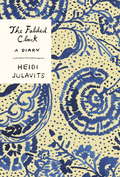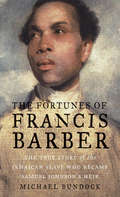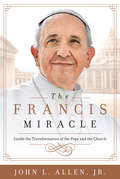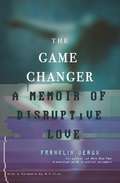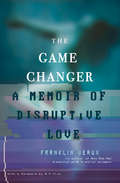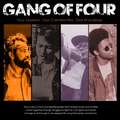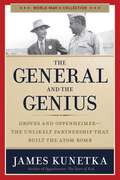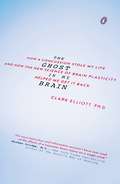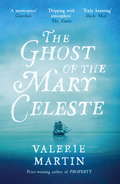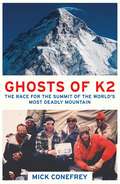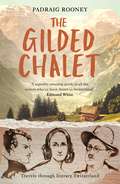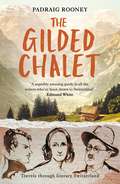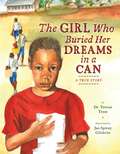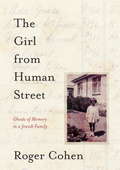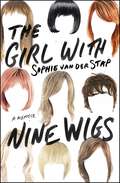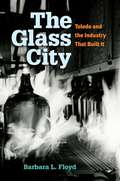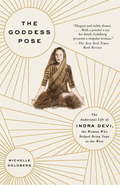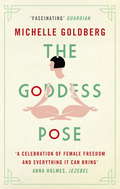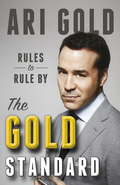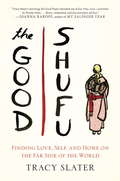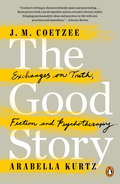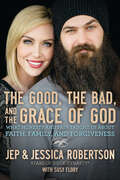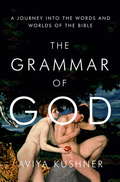- Table View
- List View
The Folded Clock
by Heidi JulavitsA raucous, stunningly candid, deliriously smart diary of two years in the life of the incomparable Heidi JulavitsLike many young people, Heidi Julavits kept a diary. Decades later she found her old diaries in a storage bin, and hoped to discover the early evidence of the person (and writer) she'd since become. Instead, "The actual diaries revealed me to possess the mind of a paranoid tax auditor." The entries are daily chronicles of anxieties about grades, looks, boys, and popularity. After reading the confessions of her past self, writes Julavits, "I want to good-naturedly laugh at this person. I want to but I can't. What she wanted then is scarcely different from what I want today." Thus was born a desire to try again, to chronicle her daily life as a forty-something woman, wife, mother, and writer. The dazzling result is The Folded Clock, in which the diary form becomes a meditation on time and self, youth and aging, betrayal and loyalty, friendship and romance, faith and fate, marriage and family, desire and death, gossip and secrets, art and ambition. Concealed beneath the minute obsession with "dailiness" are sharply observed moments of cultural criticism and emotionally driven philosophical queries. In keeping with the spirit of a diary, the tone is confessional, sometimes shockingly so, as the focus shifts from the woman she wants to be to the woman she may have become. Julavits's spirited sense of humor about her foibles and misadventures, combined with her ceaseless intelligence and curiosity, explode the typically confessional diary form. The Folded Clock is as playful as it is brilliant, a tour de force by one of the most gifted prose stylists in American letters.From the Hardcover edition.
The Fortunes of Francis Barber
by Michael BundockThis compelling book chronicles a young boy's journey from the horrors of Jamaican slavery to the heart of London's literary world, and reveals the unlikely friendship that changed his life. Francis Barber, born in Jamaica, was brought to London by his owner in 1750 and became a servant in the household of the renowned Dr. Samuel Johnson. Although Barber left London for a time and served in the British navy during the Seven Years' War, he later returned to Johnson's employ. A fascinating reversal took place in the relationship between the two men as Johnson's health declined and the older man came to rely more and more upon his now educated and devoted companion. When Johnson died he left the bulk of his estate to Barber, a generous (and at the time scandalous) legacy, and a testament to the depth of their friendship. There were thousands of black Britons in the eighteenth century, but few accounts of their lives exist. In uncovering Francis Barber's story, this book not only provides insights into his life and Samuel Johnson's but also opens a window onto London when slaves had yet to win their freedom.
The Francis Miracle: Inside the Transformation of the Pope and the Church
by John L. AllenThere is no other organization whose inner workings are more secretive than the Vatican - the spiritual and physical center - of the Catholic Church. Now, with a dynamic new leader in Pope Francis, all eyes are upon the church, as this immensely popular Pope seeks to bring the church back from the right to center, in what can almost be described as a populist stance, blurring the lines between politics, religion and culture. With topics including women, finance, scandal, and reform at the fore, never before have so many eyes been upon the church in what could be its defining moment for modern times. Now the most respected journalist covering the Vatican and the Catholic Church today, John L. Allen, reveals the inner workings of the Vatican to display the vast machinery, and the man at the helm in a way that no other writer can.The Boston Globe has stated that John L. Allen "is basically the reporter that bishops and cardinals call to find out what's going on within the confines of the Vatican."
The Frankfurt School, Jewish Lives, and Antisemitism
by Jack JacobsThe history of the Frankfurt School cannot be fully told without examining the relationships of Critical Theorists to their Jewish family backgrounds. Jewish matters had significant effects on key figures in the Frankfurt School, including Max Horkheimer, Theodor W. Adorno, Erich Fromm, Leo Lowenthal and Herbert Marcuse. At some points, their Jewish family backgrounds clarify their life paths; at others, these backgrounds help to explain why the leaders of the School stressed the significance of antisemitism. In the post-Second World War era, the differing relationships of Critical Theorists to their Jewish origins illuminate their distinctive stances toward Israel. This book investigates how the Jewish backgrounds of major Critical Theorists, and the ways in which they related to their origins, impacted upon their work, the history of the Frankfurt School, and differences that emerged among them over time.
The Game Changer: A Memoir of Disruptive Love
by Franklin VeauxTo make an open marriage work, Franklin and Celeste knew they needed to make sure no one else ever came between them. That meant there had to be rules. No overnights, no falling in love, and either one of them could ask the other to end an outside relationship if it became too much to deal with. It worked for nearly two decades--and their relentless focus on their own relationship let them turn a blind eye to the emotional wreckage they were leaving behind them. The rules did not prepare them for Amber. "I have a question," Amber would say. And whatever came next would send a wrecking ball through Franklin and Celeste's comforting illusions. Amber was the first of Franklin's polyamorous secondary partners to insist on being treated like a person, and the first to peel back the layers of insecurity and fear that surrounded their relationship. Amber was a game changer. A game-changing relationship is one that uproots and redirects your life. It overthrows your assumptions about who you are and why. It awakens you to possibilities you'd never conceived of. It disrupts. And it is the unspoken elephant in the attractive showroom of polyamorous relationships. This book is the true story of a game-changing relationship that changed not only Franklin and Celeste's lives, but the face of the modern polyamory movement. A game-changing relationship can happen to anyone. How will you handle it when it happens to you?
The Game Changer: A Memoir of Disruptive Love
by Franklin Veaux Av FloxFranklin and Celeste’s open marriage seemed perfectly safe—until the day Amber entered his life and showed them why the heart does not obey rules.
The Gang of Four: Four Leaders, Four Communities, One Friendship
by Bob Santos Gary IwamotoSeattle's Gang of Four changed the face of the city in the 1960s, '70s, and '80s by bringing four ethnic groups together in battle against city powerbrokers over development, poverty, fishing rights, and gentrification.<P><P> The four leaders learned quickly that working together provided greater results than working apart. This is the story of a powerful political alliance and lifelong friendships forged through sit-ins, protest rallies, and other acts of civil disobedience. "We got very good at occupying buildings," remarked one of the Gang.Bob Santos and Gary Iwamoto recall how a Native American, Asian American, African American, and Mexican American came together to fight for their neighborhoods and their people.Bob Santos has spent most of his life in the International District of Seattle. He grew up in the N.P. Hotel with his widowed father, Sammy Santos, a professional prizefighter. He was hired in 1972 to lead the International District Improvement Association (Inter*Im). During his tenure at Inter*Im, Santos organized property owners, businesses, residents, and activists from the Asian American community to preserve the neighborhood and build new housing.Gary Iwamoto is a regular contributing writer for the International Examiner, an Asian Pacific Islander community newspaper. He has written several plays, notably Miss Minidoka 1943, which was produced by the Northwest Asian American Theater. He and Bob Santos also wrote Humbows, Not Hot Dogs in 2002.
The General and the Genius: Groves and Oppenheimer ? The Unlikely Partnership that Built the Atom Bomb
by James KunetkaTwo ambitious men. One historic mission. With a blinding flash in the New Mexico desert in the summer of 1945, the world was changed forever. The bomb that ushered in the atomic age was the product of one of history's most improbable partnerships. The General and the Genius reveals how two extraordinary men pulled off the greatest scientific feat of the twentieth century. Leslie Richard Groves of the Army Corps of Engineers, who had made his name by building the Pentagon in record time and under budget, was made overlord of the impossibly vast scientific enterprise known as the Manhattan Project. His mission: to beat the Nazis to the atomic bomb. So he turned to the nation's preeminent theoretical physicist, J. Robert Oppenheimer--the chain-smoking, martini-quaffing son of wealthy Jewish immigrants, whose background was riddled with communist associations--Groves's opposite in nearly every respect. In their three-year collaboration, the iron-willed general and the visionary scientist led a brilliant team in a secret mountaintop lab and built the fearsome weapons that ended the war but introduced the human race to unimaginable new terrors. And at the heart of this most momentous work of World War II is the story of two extraordinary men--the general and the genius.
The Ghost in My Brain: How a Concussion Stole My Life and How the New Science of Brain Plasticity Helped Me Get it Back
by Clark ElliottThe dramatic story of one man's recovery offers new hope to those suffering from concussions and other brain traumas In 1999, Clark Elliott suffered a concussion when his car was rear-ended. Overnight his life changed from that of a rising professor with a research career in artificial intelligence to a humbled man struggling to get through a single day. At times he couldn't walk across a room, or even name his five children. Doctors told him he would never fully recover. After eight years, the cognitive demands of his job, and of being a single parent, finally became more than he could manage. As a result of one final effort to recover, he crossed paths with two brilliant Chicago-area research-clinicians--one an optometrist emphasizing neurodevelopmental techniques, the other a cognitive psychologist--working on the leading edge of brain plasticity. Within weeks the ghost of who he had been started to re-emerge. Remarkably, Elliott kept detailed notes throughout his experience, from the moment of impact to the final stages of his recovery, astounding documentation that is the basis of this fascinating book. The Ghost in My Brain gives hope to the millions who suffer from head injuries each year, and provides a unique and informative window into the world's most complex computational device: the human brain.From the Hardcover edition.
The Ghost of the Mary Celeste (Vintage Contemporaries Ser.)
by Valerie MartinFrom the ORANGE PRIZE-winning author, an enthralling novel about an enduring mystery, an infamous mystic and Arthur Conan Doyle.
The Ghosts of K2: The Race for the Summit of the World's Most Deadly Mountain
by Mick ConefreyAt 28,251 ft, K2 might be almost 800 ft shorter than Everest, but it's a far harder climb. In this definitive account, Mick Conefrey grippingly describes the early attempts to reach the summit and provides a fascinating exploration of the first ascent's complex legacy. From the ill-fated efforts of drug-addicted occultist Aleister Crowley to Achille Compagnoni and Lindo Lacedelli, the Italian duo who finally made it to the summit, The Ghosts of K2 charts how a slew of great men became fixated on this legendary mountain.Through exclusive interviews with surviving team members and their families, and unrivaled access to diaries and letters that have been archived around the world, Conefrey evokes the true atmosphere of the Savage Mountain and explores why it remains the 'mountaineer's mountain', despite a history steeped in controversy and death. Wrought with tension, and populated by tragic heroes and eccentric dreamers, The Ghosts of K2 is a masterpiece of mountaineering literature.
The Gilded Chalet: Off-piste in Literary Switzerland
by Padraig RooneyIn the summer of 1816 paparazzi trained their telescopes on Byron and the Shelleys across Lake Geneva. Mary Shelley babysat and wrote Frankenstein. Byron dieted and penned The Prisoner of Chillon. His doctor, Polidori, was dreaming up The Vampyre. Together they put Switzerland on the map.From Rousseau to Nabokov, le Carré to Conan Doyle, Hemingway to Hesse to Highsmith, Switzerland has always provided a refuge for writers as an escape from world wars, oppression, tuberculosis... or marriage. For Swiss writers from the country was like a gilded prison. The Romantics, the utopians and other spiritual seekers viewed Switzerland as a land of milk and honey, as nature's paradise. In the twentieth century, spying in neutral Switzerland spawned the finest espionage and crime fiction.Part detective work, part treasure chest, The Gilded Chalet takes you on a grand tour of the birthplace of our best-loved stories, revealing how Switzerland became the landscape of our imagination.
The Gilded Chalet: Off-piste in Literary Switzerland
by Padraig RooneyPart detective work, part treasure chest, full of history and scandal, The Gilded Chalet takes you on a grand tour of two centuries of great writing by both Swiss and foreign authors and shows how Switzerland has always been at the center of literary Europe. Two centuries after the Romantics went there to invent Gothic horror, the lure of Switzerland hasn't left us. Writers from the Fitzgeralds to Fleming, Highsmith to Hemingway, Conan Doyle to le Carré, came to escape world wars, political persecution, tuberculosis. They came for sanctuary (from oppression or the tax man), for fresh air and nude sunbathing, for scenery resembling, as Rooney puts it, 'Mother Nature on steroids.' Patricia Highsmith spent her last years in a granite home in Ticino with a fridge containing little but peanut butter and vodka. Hermann Hesse had himself buried to the neck as a cure for alcoholism. Nabokov chased butterflies and played tennis on the hotel courts. When it comes to literature, it seems all roads lead to Switzerland. Padraig Rooney peers through the chalet windows and discovers how Switzerland has influenced some of the greatest authors and characters of literature.
The Girl Who Buried Her Dreams in a Can: A True Story
by Tererai TrentAn inspirational picture book autobiography from Oprah Winfrey&’s "All-Time Favorite Guest&” This is the story of a little girl with big dreams.All the girl ever wanted was an education. But in Rhodesia, education for girls was nearly impossible. So she taught herself to read and write with her brother&’s schoolbooks and to count while watching cattle graze. When the girl became a young wife and mother, she wrote her goals on a scrap of paper and buried them in a can—an ancient ritual that reminded her that she couldn't give up on her dreams.She dreamed of going to America and earning one degree; then a second, even higher; and a third, the highest. And she hoped to bring education to all the girls and boys of her village.Would her dreams ever come true?Illustrated with Jan Spivey Gilchrist&’s graceful watercolors, Dr. Tererai Trent&’s true story of perseverance is sure to inspire readers of all ages.
The Girl from Human Street
by Roger CohenAn intimate and profoundly moving Jewish family history--a story of displacement, prejudice, hope, despair, and love.In this luminous memoir, award-winning New York Times columnist Roger Cohen turns a compassionate yet discerning eye on the legacy of his own forebears. As he follows them across continents and decades, mapping individual lives that diverge and intertwine, vital patterns of struggle and resilience, valued heritage and evolving loyalties (religious, ethnic, national), converge into a resonant portrait of cultural identity in the modern age. Beginning in the nineteenth century and continuing through to the present day, Cohen tracks his family's story of repeated upheaval, from Lithuania to South Africa, and then to England, the United States, and Israel. It is a tale of otherness marked by overt and latent anti-Semitism, but also otherness as a sense of inheritance. We see Cohen's family members grow roots in each adopted homeland even as they struggle to overcome the loss of what is left behind and to adapt--to the racism his parents witness in apartheid-era South Africa, to the familiar ostracism an uncle from Johannesburg faces after fighting against Hitler across Europe, to the ambivalence an Israeli cousin experiences when tasked with policing the occupied West Bank.At the heart of The Girl from Human Street is the powerful and touching relationship between Cohen and his mother, that "girl." Tortured by the upheavals in her life yet stoic in her struggle, she embodies her son's complex inheritance. Graceful, honest, and sweeping, Cohen's remarkable chronicle of the quest for belonging across generations contributes an important chapter to the ongoing narrative of Jewish life.From the Hardcover edition.
The Girl with Nine Wigs: A Memoir
by Charlotte Caroline Jongejan Sophie van der StapA fun-loving student, Sophie is 21 when she is diagnosed with a rare, aggressive form of cancer. As she faces the challenges of chemotherapy, wigs become a crucial part of her self-expression. With refreshing honesty and a keen eye for the absurd, The Girl With Nine Wigs will make you smile when you least expect it.
The Glass City: Toledo And The Industry That Built It
by Barbara Floyd Barbara L. FloydThe headline, “Where Glass is King,” emblazoned Toledo newspapers in early 1888, before factories in the Ohio city had even produced their first piece of glass. After years of struggling to find an industrial base, Toledo had attracted Edward Drummond Libbey and his struggling New England Glass Company to the shores of the Maumee River, and many felt Toledo’s potential as “The Future Great City of the World” would at last be realized. The move was successful—though not on the level some boosters envisioned—and since 1888, Toledo glass factories have employed thousands of workers who created the city’s middle class and developed technical innovations that impacted the glass industry worldwide. But as has occurred in other cities dominated by single industries—from Detroit to Pittsburgh to Youngstown—changes to the industry it built have had a devastating impact on Toledo. Today, 45 percent of all glass is manufactured in China. Well-researched yet accessible, this new book explores how the economic, cultural, and social development of the Glass City intertwined with its namesake industry and examines Toledo’s efforts to reinvent itself amidst the Midwest’s declining manufacturing sector.
The Goddess Pose: The Audacious Life of Indra Devi, the Woman Who Helped Bring Yoga to the West
by Michelle GoldbergWhen the woman who would become Indra Devi was born in Russia in 1899, yoga was virtually unknown outside of India. By the time of her death, in 2002, it was being practiced everywhere, from Brooklyn to Berlin to Ulaanbaatar. In The Goddess Pose, New York Times best-selling author Michelle Goldberg traces the life of the incredible woman who brought yoga to the West--and in so doing paints a sweeping picture of the twentieth century. Born into the minor aristocracy (as Eugenia Peterson), Devi grew up in the midst of one of the most turbulent times in human history. Forced to flee the Russian Revolution as a teenager, she joined a famous Berlin cabaret troupe, dove into the vibrant prewar spiritualist movement, and, at a time when it was nearly unthinkable for a young European woman to travel alone, followed the charismatic Theosophical leader Jiddu Krishnamurti to India. Once on the subcontinent, she performed in Indian silent cinema and hobnobbed with the leaders of the independence movement. But her greatest coup was convincing a recalcitrant master yogi to train her in the secrets of his art. Devi would go on to share what she learned with people around the world, teaching in Shanghai during World War II, then in Hollywood, where her students included Gloria Swanson and Greta Garbo. She ran a yoga school in Mexico during the height of the counterculture, served as spiritual adviser to the colonel who tried to overthrow Panamanian strongman Manuel Noriega, and, in her eighties, moved to Buenos Aires at the invitation of a besotted rock star. Everywhere she went, Indra Devi evangelized for yoga, ushering in a global craze that continues unabated. Written with vivid clarity, The Goddess Pose brings her remarkable story--as an actress, yogi, and globetrotting adventuress--to life.From the Hardcover edition.
The Goddess Pose: The Audacious Life of Indra Devi, the Woman Who Helped Bring Yoga to the West
by Michelle GoldbergWhen the woman who would become Indra Devi was born in Russia in 1899, yoga was virtually unknown outside of India. By the time of her death, in 2002, it was being practiced everywhere, from Brooklyn to Berlin to Ulaanbaatar. In The Goddess Pose, New York Times best-selling author Michelle Goldberg traces the life of the incredible woman who brought yoga to the West and in so doing paints a sweeping picture of the twentieth century.Born into the minor aristocracy (as Eugenia Peterson), Devi grew up in the midst of one of the most turbulent times in human history. Forced to flee the Russian Revolution as a teenager, she joined a famous Berlin cabaret troupe, dove into the vibrant prewar spiritualist movement, and, at a time when it was nearly unthinkable for a young European woman to travel alone, followed the charismatic Theosophical leader Jiddu Krishnamurti to India. Once on the subcontinent, she performed in Indian silent cinema and hobnobbed with the leaders of the independence movement. But her greatest coup was convincing a recalcitrant master yogi to train her in the secrets of his art. Devi would go on to share what she learned with people around the world, teaching in Shanghai during World War II, then in Hollywood, where her students included Gloria Swanson and Greta Garbo. She ran a yoga school in Mexico during the height of the counterculture, served as spiritual adviser to the colonel who tried to overthrow Panamanian strongman Manuel Noriega, and, in her eighties, moved to Buenos Aires at the invitation of a besotted rock star. Everywhere she went, Indra Devi evangelized for yoga, ushering in a global craze that continues unabated. Written with vivid clarity, The Goddess Pose brings her remarkable story as an actress, yogi, and globetrotting adventuress to life.
The Gold Standard: Rules to Rule By
by Ari GoldAri Gold is known for his ruthless approach to deal-making and client relationships that made him one of, if not the, most powerful and sought-after agents in Hollywood until he retired in 2011. In his new book THE GOLD STANDARD, Gold will illuminate, for the first time, his unique, effective and, some would say, outrageous philosophies on running a successful business, client management, employee motivation, keeping a happy home life, and other keys to his many successes. Brash, emphatic, instructive and always wise, Gold's book will rival business and leadership bestsellers the world over. In his own words and with his trademark enthusiasm, Gold's tome will be the only book anyone wanting to make something of him or herself will ever need. Ari Gold says: "In my humble opinion, if you want to run a successful business this is the only book you'll ever have to read. And my humble opinion is never wrong."
The Good Shufu
by Tracy SlaterThe brave, wry, irresistible journey of a fiercely independent American woman who finds everything she ever wanted in the most unexpected place. Shufu: in Japanese it means "housewife," and it's the last thing Tracy Slater ever thought she'd call herself. A writer and academic, Tracy carefully constructed a life she loved in her hometown of Boston. But everything is upended when she falls head over heels for the most unlikely mate: a Japanese salary-man based in Osaka, who barely speaks her language. Deciding to give fate a chance, Tracy builds a life and marriage in Japan, a country both fascinating and profoundly alienating, where she can read neither the language nor the simplest social cues. There, she finds herself dependent on her husband to order her food, answer the phone, and give her money. When she begins to learn Japanese, she discovers the language is inextricably connected with nuanced cultural dynamics that would take a lifetime to absorb. Finally, when Tracy longs for a child, she ends up trying to grow her family with a Petri dish and an army of doctors with whom she can barely communicate. And yet, despite the challenges, Tracy is sustained by her husband's quiet love, and being with him feels more like "home" than anything ever has. Steadily and surely, she fills her life in Japan with meaningful connections, a loving marriage, and wonder at her adopted country, a place that will never feel natural or easy, but which provides endless opportunities for growth, insight, and sometimes humor. A memoir of travel and romance, The Good Shufu is a celebration of the life least expected: messy, overwhelming, and deeply enriching in its complications.From the Hardcover edition.
The Good Story
by J. M. Coetzee Arabella KurtzA fascinating dialogue on the human desire to make up stories between Nobel Prize-winning author J. M. Coetzee and psychotherapist Arabella Kurtz The Good Story is an exchange between a writer with a long-standing interest in moral psychology and a psychotherapist with training in literary studies. Coetzee and Kurtz consider psychotherapy and its wider social context from different perspectives, but at the heart of both their approaches is a fascination with narrative. Working alone, the writer is in control of the story he or she tells. The therapist, on the other hand, collaborates with the patient in telling the story that might reveal the "truth." The authors discuss both individual psychology and the psychology of the group: the school classroom, the gang, the settler nation in which the brutal deeds of the ancestors must be accommodated into a national story. In a meeting of the minds that is illuminating, surprising, and thought provoking, Coetzee and Kurtz explore the human capacity for self-examination--our attempts to understand our own individual life stories as well as our part in the larger story through language.
The Good Story: Exchanges on Truth, Fiction and Psychotherapy
by J. M. Coetzee Arabella KurtzJ.M. Coetzee: What relationship do I have with my life history? Am I its conscious author, or should I think of myself as simply a voice uttering with as little interference as possible a stream of words welling up from my interior?Arabella Kurtz: One way of thinking about psychoanalysis is to say that it is aimed at setting free the narrative or autobiographical imagination.The Good Story is a fascinating dialogue about psychotherapy and the art of storytelling between a writer with a long-standing interest in moral psychology and a psychotherapist with training in literary studies. Coetzee and Kurtz consider psychotherapy and its wider social context from different perspectives, but at the heart of both of their approaches is a concern with narrative. Working alone, the writer is in control of the story he or she tells. The therapist, on the other hand, collaborates with the patient in developing an account of the patient's life and identity that is both meaningful and true.In a meeting of minds that is illuminating and thought-provoking, the authors discuss both individual psychology and the psychology of the group: the school classroom, gangs and the settler nation, in which the brutal deeds of ancestors are accommodated into a national story. Drawing on great writers like Cervantes and Dostoevsky and psychoanalysts like Freud and Melanie Klein, Coetzee and Kurtz explore the human capacity for self-examination, our wish to tell our own life stories and the resistances we encounter along the way.J.M. Coetzee's latest novel, The Schooldays of Jesus, will soon be available from Viking.From the Hardcover edition.
The Good, the Bad, and the Grace of God: What Honesty and Pain Taught Us About Faith, Family, and Forgiveness
by Susy Flory Jessica Robertson Jep RobertsonA Moving Story of Redemption and Second Chances Jep Robertson, the youngest son of Duck Commander Phil Robertson, and his wife, Jessica, open up about their personal trials, their early years together, and the challenges that might have destroyed them both had the grace of God not intervened. Jep describes being molested as a child and his reluctance to tell anyone until only a few years ago, his downward spiral into drug and alcohol abuse, and the eventual intervention of his family. Jessica shares about the difficult failure of her first marriage while still a teenager and the hurt that came along with it, much of it from the church. Her insecurities spun out of control as she wondered whether she would ever be good enough or pretty enough. This book is their love story but, more importantly, their love story for God.&“We are desperate to let people know that no matter what you&’ve done; no matter what you&’ve lived through, you can come out of it. You can be washed clean. You are redeemed."
The Grammar of God: A Journey into the Words and Worlds of the Bible
by Aviya KushnerFor readers of Bruce Feiler's Walking the Bible and Kathleen Norris's The Cloister Walk comes a powerful exploration of the Bible in translation. Aviya Kushner grew up in a Hebrew-speaking family, reading the Bible in the original Hebrew and debating its meaning over the dinner table. She knew much of it by heart--and was therefore surprised when, while getting her MFA at the University of Iowa, she took the novelist Marilynne Robinson's class on the Old Testament and discovered she barely recognized the text she thought she knew so well. From differences in the Ten Commandments to a less ambiguous reading of the creation story to a new emphasis on the topic of slavery, the English translation often felt like another book entirely from the one she had grown up with. Kushner began discussing the experience with Robinson, who became a mentor, and her interest in the differences between the ancient language and the modern one gradually became an obsession. She began what became a ten-year project of reading different versions of the Hebrew Bible in English and traveling the world in the footsteps of the great biblical translators, trying to understand what compelled them to take on a lifetime project that was often considered heretical and in some cases resulted in their deaths. In this eye-opening chronicle, Kushner tells the story of her vibrant relationship to the Bible, and along the way illustrates how the differences in translation affect our understanding of our culture's most important written work. A fascinating look at language and the beliefs we hold most dear, The Grammar of God is also a moving tale about leaving home and returning to it, both literally and through reading.Praise for The Grammar of God "Aviya Kushner has written a passionate, illuminating essay about meaning itself. The Grammar of God is also a unique personal narrative, a family story with the Bible and its languages as central characters."--Robert Pinsky "Kushner is principally interested in the meanings and translations of key Biblical passages, and she pursues this interest with a fierce passion. . . . A paean, in a way, to the rigors and frustrations--and ultimate joys--of trying to comprehend the unfathomable."--Kirkus Reviews "A remarkable and passionately original book of meditation, exegesis, and memoir. The biblical passages are of a piece with stories of Kushner's childhood, her quest to become a writer, and commemoration of her Israeli grandfather, the only one of his German family to escape extinction at the hands of the Nazis. In Kushner's redemptive vision, the Bible in its many translations is a Noah's ark, and her book, too, does a work of saving. When I put it down, I wept."--Rosanna Warren, author of Stained Glass "What a glorious book! From Sarah's laughter to the idea of Jewish law being a dialogue and not a rigid set of rules, this is a book not only to learn from but to savor."--Peter Orner, author of Love and Shame and Love "In this splendid book, each page is a wonder."--Willis Barnstone, author of The Restored New Testament "Kushner reminds us in The Grammar of God that in Hebrew beautiful things are also beautiful words. Her gift as a writer is to take us very near to the text, breathe into it, and give it a new life."--Rodger Kamenetz, author of The Jew in the LotusFrom the Hardcover edition.
